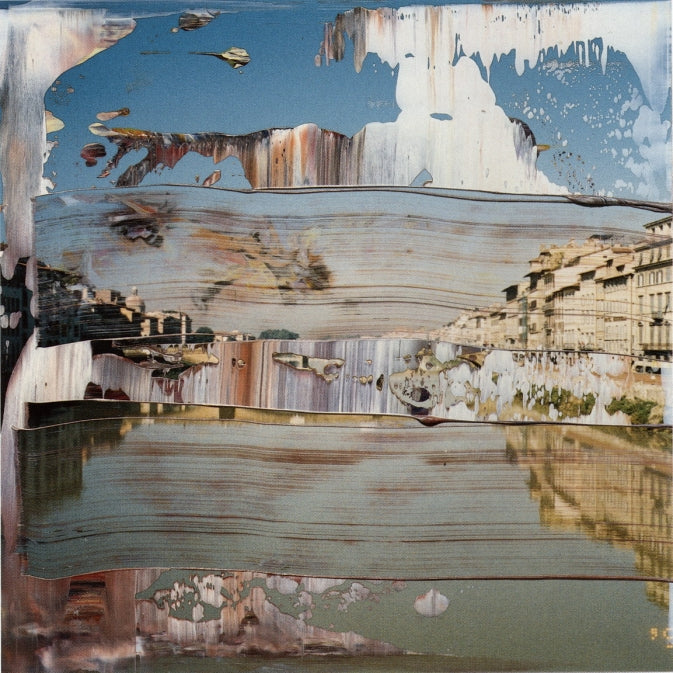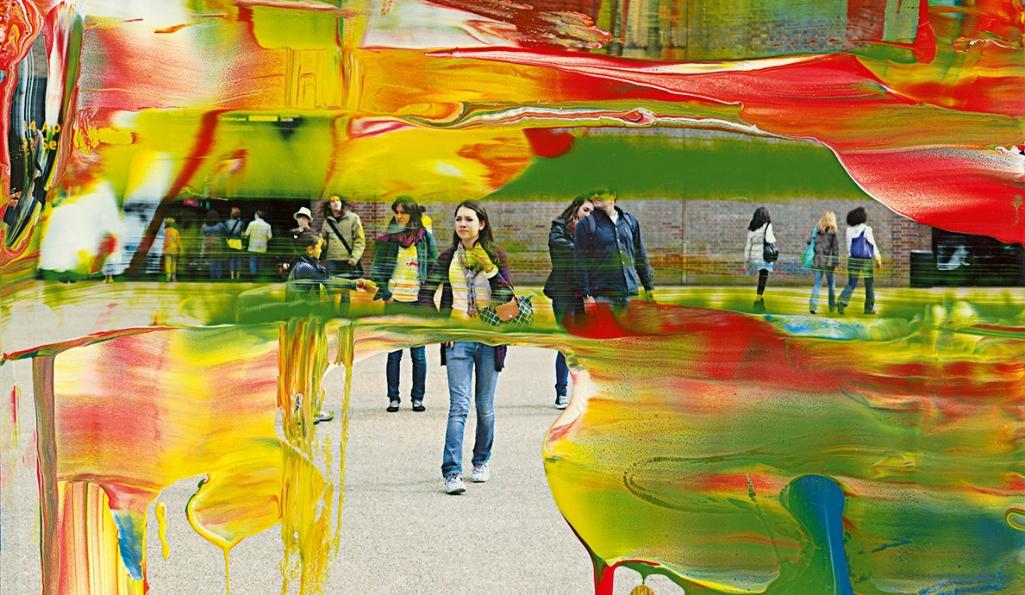
Who is Gerhard Richter?
Gerhard Richter is a contemporary German painter considered one of the most influential living artists. Richter's experiments with abstraction and photo-based painting contributed greatly to the history of the medium. Drawing from his vast archive of images known as the Atlas, Richter's paintings reference images of his daughter Betty, flickering candles, aerial photographs, portraits of criminals and even landscapes. Learn more about the German painter here.

The Life and Career of Gerhard Richter
Gerhard Richter was born in 1932 in Dresden, Germany. Throughout his career, Richter has been captivated by photography and painting, by the way these two seemingly opposing practices communicate and challenge each other. From lush canvases rendered in lush color to paintings of photographic detail and single-brush close-ups, Richter has moved effortlessly between the two mediums, revealing the complexity of their relationship without ever asserting one above the other.
Richter's life traces the defining moments of 20th century history, and his work reverberates with the trauma of National Socialism and the Holocaust. After World War II, Richter trained in a socialist realist style sanctioned by the East German communist government. By defecting to West Germany in 1961, a month before the construction of the Berlin Wall, Richter left behind all his artistic work until then. From 1961 to 1964 - alongside Blinky Palermo and Sigmar Polke - Richter studied at the Staatliche Kunstakademie Düsseldorf, where he began to explore the material, conceptual and historical implications of painting without ideological constraints. During this time, the artist began to produce blurred photo-paintings. The works explore the conflicting nature of the formal composition of an image and the content it contains.

What are the characteristics of Gerhard Richter's works?
Richter's early paintings in Düsseldorf, spurred by a fascination with current affairs and popular culture, responded to magazine images and newspaper clippings. During the 1960s, Richter continued to tackle found and newspaper footage on subjects such as military jets, portraits, and aerial photography. Notably, he reimagined family photos he had smuggled out of East Germany, which included his smiling Uncle Rudi, dressed in a Nazi uniform, and Aunt Marianne, who Richter later discovered had been murdered in a mental institution during the Third Reich. Richter's idiosyncratic blurring technique made such complex moments of personal and social history seem to crackle with static, distancing the viewer from their subjects and casting doubt on painting's ability to document in the same way as photography. Other common themes in his work are the elements of chance and the interplay between realism and abstraction. Richter introduced abstraction to his repertoire in the following decades, analyzing pictorial expression through an ink squeegee technique on canvas.

Does Gerhard Richter paint in photographs?
Gerhard Richter began painting over photographs in the mid-1980s, at the very moment when New York neo-conceptual artists were grappling with issues of image appropriation and reproduction, and German neo-expressionists were concentrating on the pure emotion of painting.

What do Gerhard Richter's works approach?
Richter has continued to question the conceptual and formal resonance of photographic images over the past six decades - tweaking, cropping and manipulating his sources and building an archival compendium of monumental breadth entitled Atlas (1962-2013). The artist equally addresses what can and cannot be represented in his work, confronting such painful moments in recent history as the 2001 terrorist attacks on the World Trade Center in New York, the horrors of the Holocaust in Birkenau and the lives and deaths of members of the extremist left-wing group Baader-Meinhof. While Richter walks the tightrope between painting and photography, it spans a vast range of techniques and subjects, from the highly charged to the everyday - as evidenced by his monumental 2020 survey Painting After All at the Met Breuer, New York. Richter investigates the nature of representation and perception with a characteristic sense of uneasy skepticism.

What is the value of a piece of art by Gerhard Richter?
In 2012, Richter set a record auction price for a painting sold by a living artist, with his Abstraktes Bild (809-4) (1994), which cost $34 million. It broke that twice again, first in 2013 with Domplatz, Mailand (Cathedral Square, Milan) (1968) selling for $37.1 million, then in 2015 with the sale of Abstraktes Bild (1986) for $44.52 million. Currently, the artist lives and works in Cologne, Germany. Today, his works are part of the collections of the Art Institute of Chicago, the Museum of Modern Art in New York, the Tate Gallery in London and the Albertina in Vienna, among others.

The Influence of Gerhard Richter
In 1967 Richter received the Junger Western Art Prize and began to expand his series from what came to be known as Farbtafeln (Color Tables) (1966–2008) and Graue Bilder (Gray Paintings) (1966–2014). Richter was drawn to the tonal nuances of gray as well as the conceptual rigor of the tonality - seemingly stripped of feeling and association. In 1972, Richter was chosen to represent West Germany at the Venice Biennale. That same year, he exhibited at Documenta in Kassel, Germany, where he exhibited again in 1977, 1982 and 1987. Gerhard Richter is widely regarded as one of the most influential artists in contemporary art, and his work has been a source of inspiration for many subsequent artists. . His experimental approach and his use of different techniques and styles has influenced a generation of artists looking to explore new forms of visual representation. Furthermore, his critical reflection on the nature of the image and its relationship with reality has been an important reference for artists who work with the issue of truth and representation. In short, Gerhard Richter's influence is still felt today, and his work continues to be relevant and inspiring to many artists.

